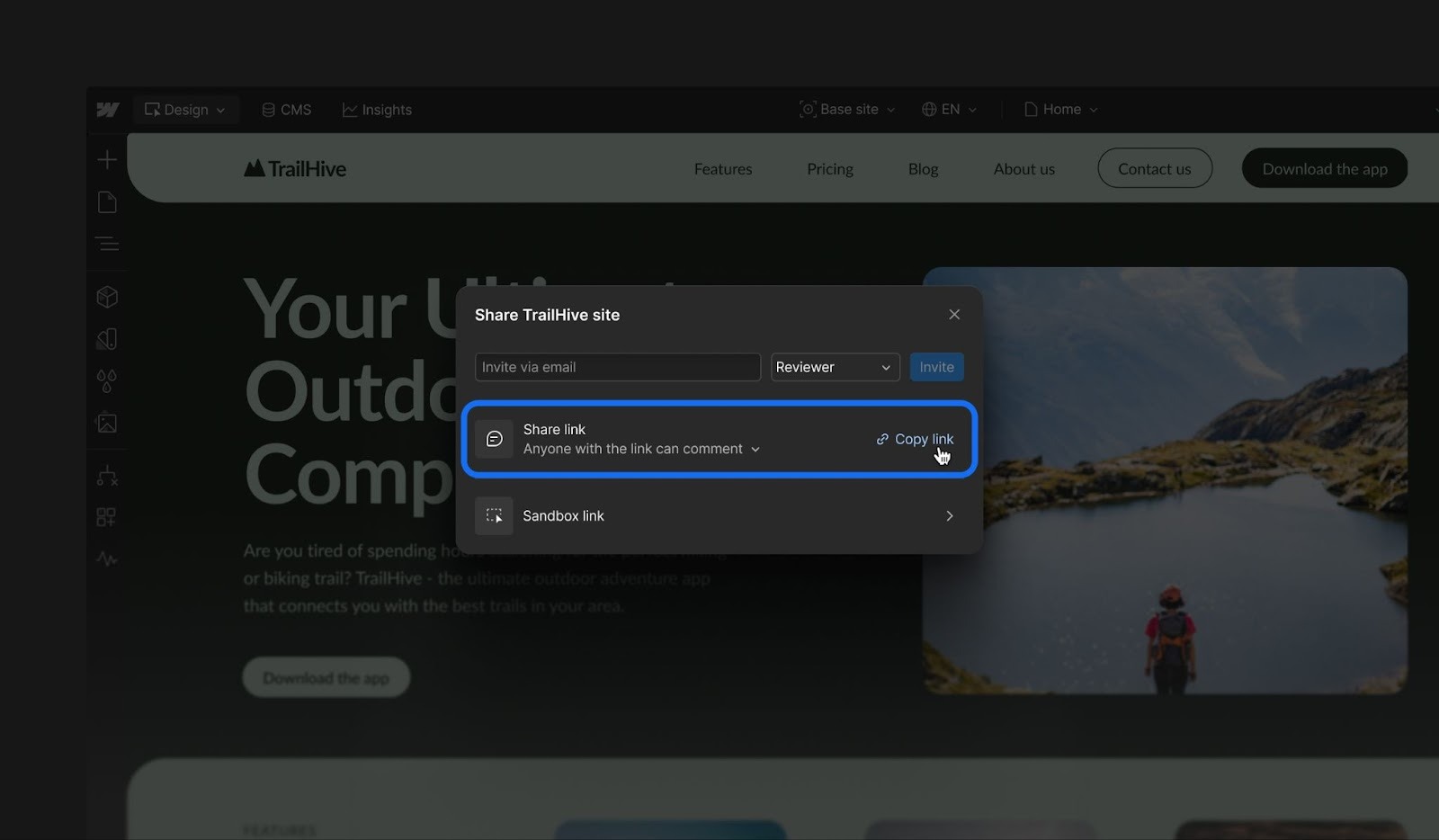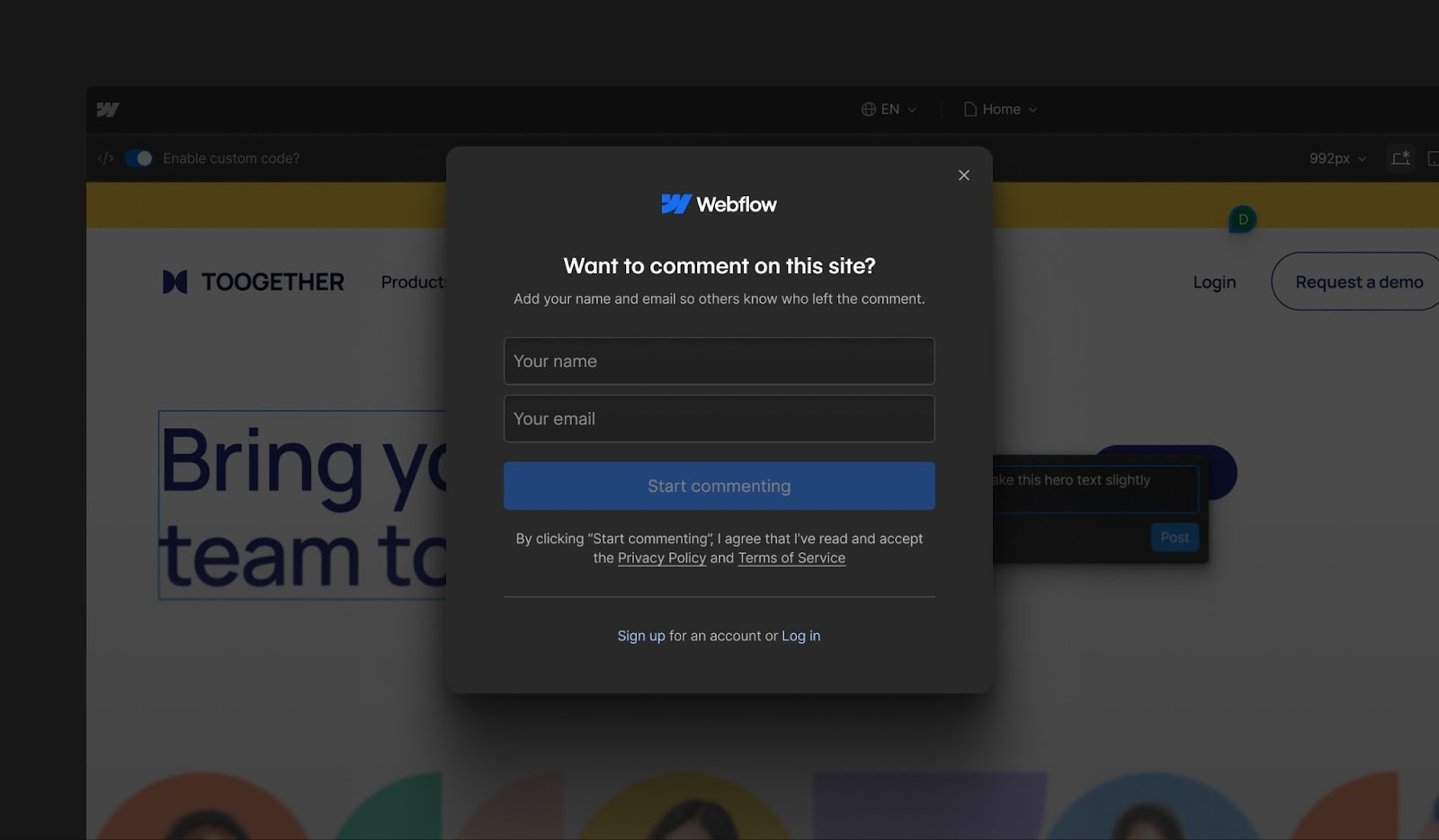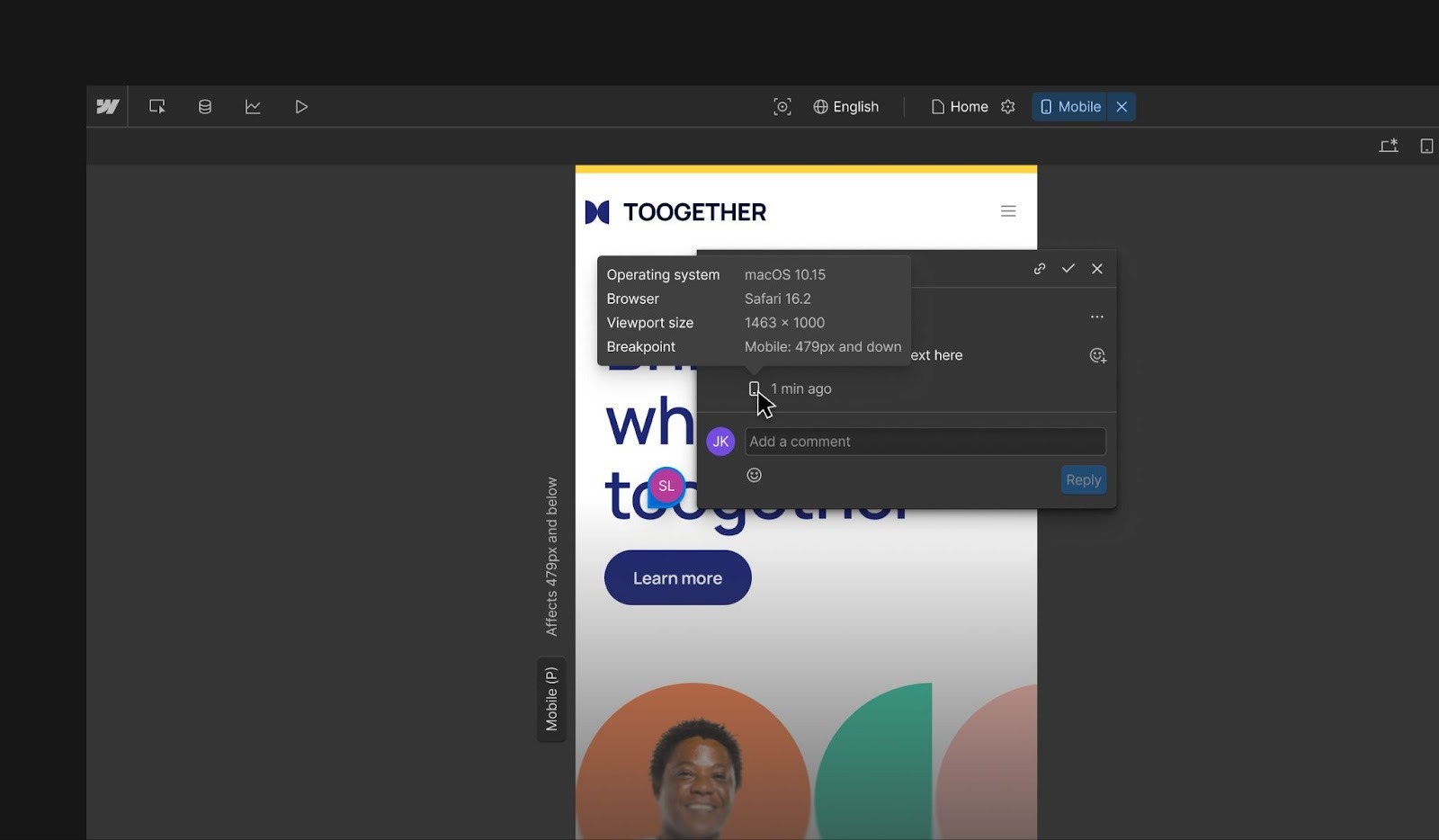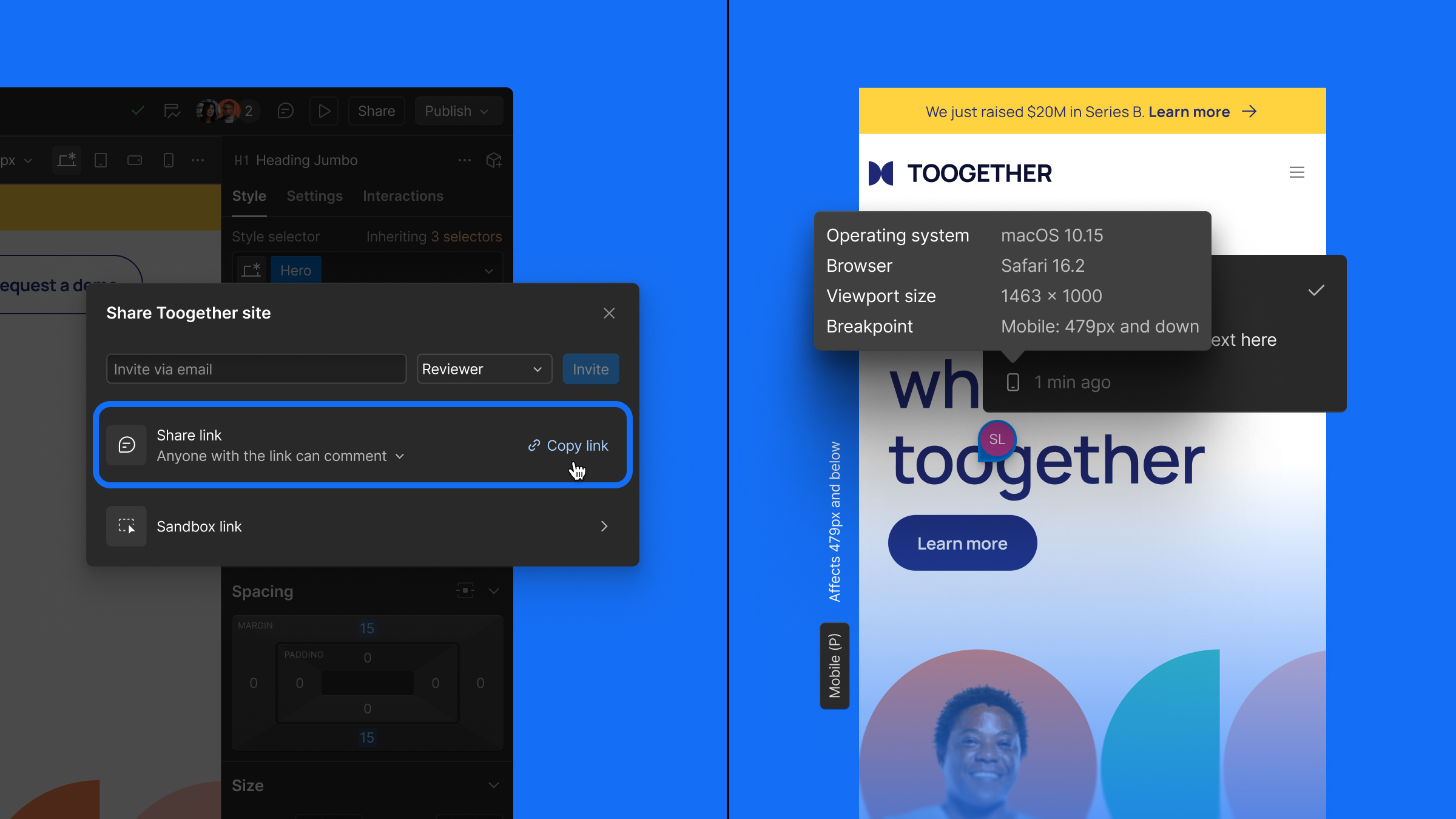



Because great websites start with great feedback, we’re making reviews easier than ever for teams of all sizes in Webflow.
To keep projects moving forward, it’s crucial to involve the right people at the right time, with the right tools. Too often, review cycles slow down because stakeholders can’t quickly review and leave feedback just by clicking on a link, or because designers and developers don’t have enough context to understand exactly what a reviewer saw when leaving a comment. These moments of friction add unnecessary delays and force teams to rely on email threads, manual screenshots, live syncs, or other third-party tools.
We’ve been investing heavily in making collaboration smoother and more powerful for teams of all sizes working together on website experiences — from real-time collaboration, to a new commenting experience, to making it faster to invite teammates into the platform, and now, more speed and precision when it comes to running feedback cycles in Webflow.
Today, we’re excited to announce two new updates designed to streamline reviews and reduce friction for how teams work together:
- Comment-only links – no account required: Share a link so stakeholders can quickly review and leave feedback on the site without needing a Webflow account. This will allow you to speed up review cycles with fewer hurdles required for someone to share feedback in Webflow.
- Comment metadata: Every parent comment now includes helpful context like device and operating system, browser and browser version, and screen size. This will empower you to resolve issues and address feedback without needing to wait for follow-ups or clarification.
These two improvements are available to all Webflow customers starting today.
Comment-only links – no account required
When you’re working with clients, leadership, or other external stakeholders, not everyone should have to set up a Webflow account just to review and leave feedback. This friction often pushes feedback into third-party tools, halting progress because teams are forced to context-switch and coordinate across additional platforms.
With comment-only links, you can now share a simple link that lets anyone review your site and leave comments without creating a Webflow account. They just enter their name and email when posting a comment.


This means:
- Stakeholders can quickly weigh in on a redesign or a new copy approach
- Feedback stays centralized in Webflow instead of scattered across other tools
- Freelancers and agencies can quickly involve clients in reviews without managing accounts
For people who need to participate in reviews regularly, we still recommend inviting them into Webflow with a free Reviewer seat. But for those who may not yet be regular reviewers, comment-only links give you the ability to get their feedback when you need it with fewer hurdles.
To learn more about comment-only links, check out our documentation.
Comment metadata
Even when feedback happens inside Webflow, it can sometimes be tricky to find out precise details about the reviewer that shared the feedback — especially with differences in browsers or devices.
That’s why we’re introducing comment metadata. Every new comment now comes with helpful context that indicates details about the reviewer when they left their feedback — like device and operating system, browser and browser version, and viewport size.

This means you can quickly identify cross-browser or device-specific issues without having to chase down those details, and save time by understanding important context upfront so you can reduce the need for back-and-forth clarifications.
As one customer put it: “Having the comment metadata to understand details about the user that left the feedback helps me know where to start to triage — it prevents one comment from turning into five different emails.”
To learn more about how comment metadata works, take a look at our documentation.
What’s next
Today’s updates are part of our ongoing investment in making Webflow the best place for teams to collaborate on building, managing, and optimizing website experiences that drive results for your business.
Looking ahead, we’re exploring even more ways to improve commenting and collaboration — things like viewing comments while you're designing, moving real-time collaboration from beta to general availability, and more.
Our goal is simple: help teams of all sizes work seamlessly together in Webflow so your projects stay on track, your feedback cycles stay efficient, and your team can spend more time creating and less time chasing context.

Build with your team, not around them
Now your entire team can work together in Webflow at the same time — even on the same page — without time-consuming bottlenecks or unnecessary handoffs.





























